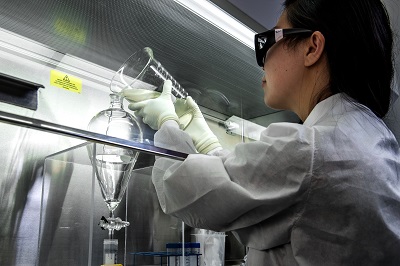For Class C medical device registration with Singapore's Health Sciences Authority (HSA), a comprehensive set of technical documents is required to demonstrate the safety, efficacy, and quality of the device. Below are the key documents that must be included in the application:
Technical Document Requirements for Class C Medical Device Registration:
Device Description and Information:
- Detailed Device Description: A comprehensive description of the device, including:
- Intended use and indications for use.
- Device classification (confirming Class C).
- Components of the device and their functions.
- Design specifications, including the materials, technology, and components used in the device.
- Product family details, if applicable, in case of related devices with similar designs.
Clinical Evidence:
- Clinical Evaluation Report (CER): A critical document for Class C devices, summarizing the clinical data that supports the device's safety and performance. This may include:
- Clinical trial data (if available).
- Clinical literature and post-market clinical data supporting the device's intended use.
- Clinical equivalence data, if the device is similar to an already approved device.
- The report should demonstrate how the device meets safety and performance standards.
Risk Management Documentation:
- Risk Management Report based on ISO 14971: This document should describe:
- The identification and assessment of potential risks associated with the device.
- The risk control measures implemented to mitigate identified risks.
- The risk management process should be in line with the ISO 14971 standard.
Quality Management System (QMS):
- Proof of QMS compliance: The device must be manufactured under a Good Manufacturing Practice (GMP) framework, typically demonstrated by:
- A valid ISO 13485 certification.
- Documentation demonstrating compliance with QMS and GMP guidelines.
- Evidence of internal audits, and the manufacturer’s processes for ensuring consistent product quality.
Performance and Testing Data:
- Preclinical/bench testing data: This includes testing of the device’s functionality, durability, and performance in laboratory or simulated environments.
- Biocompatibility testing results (for devices in contact with the body).
- Electromagnetic Compatibility (EMC) testing data (for electronic devices).
- Software validation, if the device includes software or is software-driven.
- Sterility testing, if the device is supplied sterile.
Product Labeling and Instructions for Use (IFU):
- Device labeling: Labels must comply with HSA’s requirements and should include:
- Device name and manufacturer information.
- Intended use, indications, contraindications, and any warnings or precautions.
- Serial numbers, lot numbers, and expiry dates (if applicable).
- Instructions for Use (IFU): Detailed instructions that include the correct use, handling, maintenance, and disposal of the device. It must be in English and follow HSA’s format guidelines.
- Symbols on the device labeling that must adhere to the applicable standard.
Manufacturing Information:
- Manufacturing process: Description of the manufacturing process, including materials, equipment, and controls used.
- Facility information: Details of the manufacturing facility, including evidence of compliance with GMP.
- Sterilization methods, if applicable, should be documented with supporting data.
Post-Market Surveillance (PMS) Plan:
- A post-market surveillance plan is required to monitor the device’s performance once it is available on the market.
- The plan should include mechanisms for reporting adverse events, field safety corrective actions, and recalls if necessary.
Declaration of Conformity (DoC):
- A Declaration of Conformity from the manufacturer stating that the device meets all the relevant regulatory requirements and HSA standards.
- This may also include conformity to ISO 13485, ISO 14971, and other relevant standards.
International Approvals (if applicable):
- Provide copies of any international certifications or approvals (e.g., FDA approval, CE Marking, TGA approval) if the device is already marketed in other countries.
- Foreign market approval documents help to demonstrate the device’s safety and efficacy in different regulatory regions.
Labeling and Packaging Specifications:
- Packaging specifications for the device, including the materials and methods used.
- Information on storage conditions and shelf-life, if applicable.
Technical File:
- A comprehensive technical file that includes all the documents required for the registration process. This file should be kept up-to-date and made available for inspection by HSA.
Preparing the Application:
- Collect all required documents: Ensure that all the documents listed above are complete and accurate.
- Convert documents to electronic format (usually PDF) for submission through the HSA Medical Device Registration (MDR) Portal.
- Review the application: Double-check the documentation for completeness before submission to ensure there are no missing or incorrect details.
- Submit the application: Log into the MDR Portal and submit the application with all the required technical documents.
- Respond to HSA’s requests: If HSA requests additional information or clarification, ensure prompt and complete responses.
By preparing these technical documents in line with HSA’s requirements, you help ensure the smooth approval process for Class C medical device registration in Singapore.
Let me know if you need further details or assistance with any specific document!

Contact Us:
Whatsapp or Wechat:+86 15816864648;email address:hito.lin@grzan.cn
.png)
.jpg)

.png)

.png)